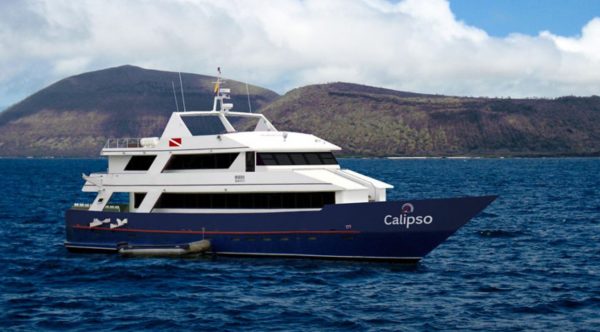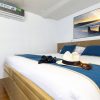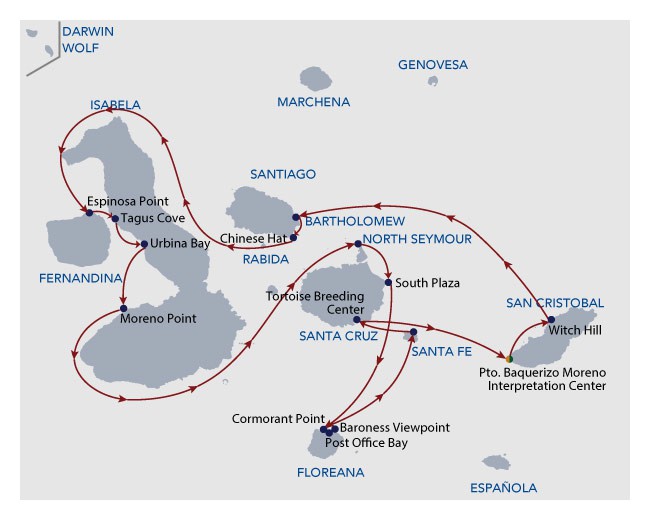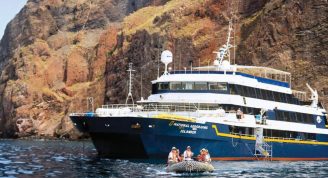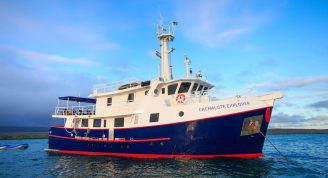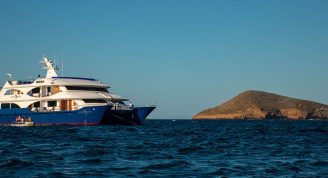Description
The recently refurbished M/Y Calipso allows you to explore the Galapagos Islands in both Naturalist and Diving itineraries. Calipso boasts a spacious lounge, dining area, fantastic new dive deck, sundeck with a Jacuzzi, and 10 comfortable cabins to accommodate up to 16 passengers.
Trip Name
Galapagos Naturalist Cruise 8 Days (Calipso)
Days
8
Overview
Vessel Type: Motor Yacht
Length: 115 ft / 35 m
Passenger Capacity: 16
Built / Rebuilt: 1991 / 2019
Calipso is the right choice to experience the Enchanted Islands in comfort, style and safety.
Completely rebuilt, all systems and every inch of both the interior and exterior spaces are brand new. From accommodating dietary requests to crew member professionalism, we will stop at nothing in the pursuit of making your time onboard seamless and stress free.
Calipso has 6 upper deck cabins and 2 main deck cabins, all doubles with the flexibility of 1 or 2 beds. We have 2 single cabins on the lower deck. Our cabins are fresh and modern with ensuite bathrooms. Each cabin has individual climate control, TV, hair dryer, 2 USB plugs and storage area.


